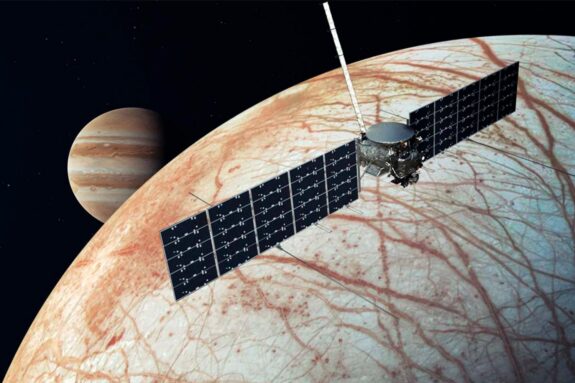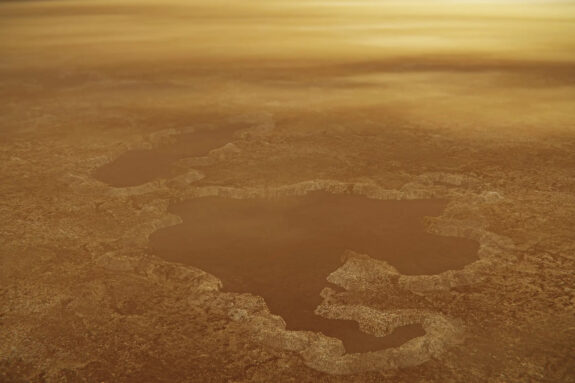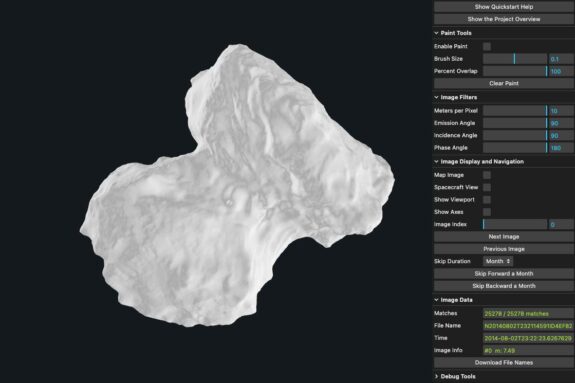
Jason Soderblom
Principal Research Scientist
Deciphers the composition and structure of planetary surfaces to understand the formation and evolution of solar system bodies.
Research Interests
In my lab, we study the geology, geophysics and composition of planetary surfaces and atmosphere to better understand their formation and evolution. Our recent work focuses on three areas of research: the Moon, Titan, and comets.
The preservation of the Moon’s ancient crust makes it an ideal laboratory for understanding the geological history of terrestrial planetary bodies. Through a combinations of gravity field measurements and numerical simulations, we investigate how impacts create and destroy porosity to better understand historic porosity in planetary crusts.
The exotic materials on Titan allow us to test our understanding of basic geologic processes. Using numerical simulations along with infrared and radar remote sensing images, we investigate how liquid hydrocarbons modify Titan’s surface in ways that differ from the way water chapes the surfaces of Earth and Mars. Through computer simulations constrained by radar observations, we examine how methane clathrates fundamentally alter the crater formation process on Titan.
Comets offer a window in the primordial building blocks of the Solar System; deciphering this information, however, requires us to understand the ways in which comets evolve. Through analysis of imaging data and thermal modeling, we investigate the processes that modify cometary surfaces and redistribute materials, and the links of these processes to cometary outbursts.
Topics I investigate:
- Habitability of Ocean Worlds in our Solar System
- Exotic properties of the materials comprising Titan’s landscape and surface liquids
- Evolution of porosity within planetary crusts
- Processing and evolution of cometary nuclei
- Impact craters as probes of crustal properties
- Scattering and transmission of light off planetary surfaces and through planetary atmospheres
- Design, development, and implementation of planetary exploration missions and instruments
Biographic Sketch
Jason Soderblom joined the EAPS research community in 2011. After earning a BS with Honors in Physics from the University of Arizona in 2000, Jason went on to study planetary science at Cornell University, earning a master’s in 2006 and PhD in 2007. He is extensively involved in NASA’s planetary exploration program. He is a science Co-I on NASA’s Dragonfly mission to Titan and on two instruments on NASA’s Europa Clipper mission: the Europa Imaging System (EIS) and the Mapping Infrared Spectrometer for Europa (MISE). He has a leadership role on the Comet Astrobiology Exploration Sample Return (CAESAR) mission currently being developed for proposal to NASA’s next New Frontiers opportunity. Jason has also been part of science teams on the Mars Exploration Rover, Cassini, and GRAIL missions.
Key Publications
-
Wakita, S., B. C. Johnson, J. M. Soderblom, J. Shah, C. Neish, J. K. Steckloff (2023). Modeling the Formation of Selk Impact Crater on Titan: Implications for Dragonfly, Planetary Sci. J., 4, doi: 10.3847/PSJ/acbe40
-
Huang, Y. H., J. M. Soderblom, D. A. Minton, M. Hirabayashi, H. J. Melosh (2022). Bombardment history of the Moon constrained by crustal porosity, Nature Geosci., 531–535, doi: 10.1038/s41561-022-00969-4
-
Steckloff, J. K., J. M. Soderblom, K. K. Farnsworth, V. F. Chevrier, J. Hanley, A. Soto, J. J. Groven, W. M. Grundy, L. A. Pearce, S. C. Tegler, and A. Engle (2020). Stratification Dynamics of Titan’s Lakes via Methane Evaporation, Planet. Sci. J., 1, 26, doi: 10.3847/PSJ/ab974e


